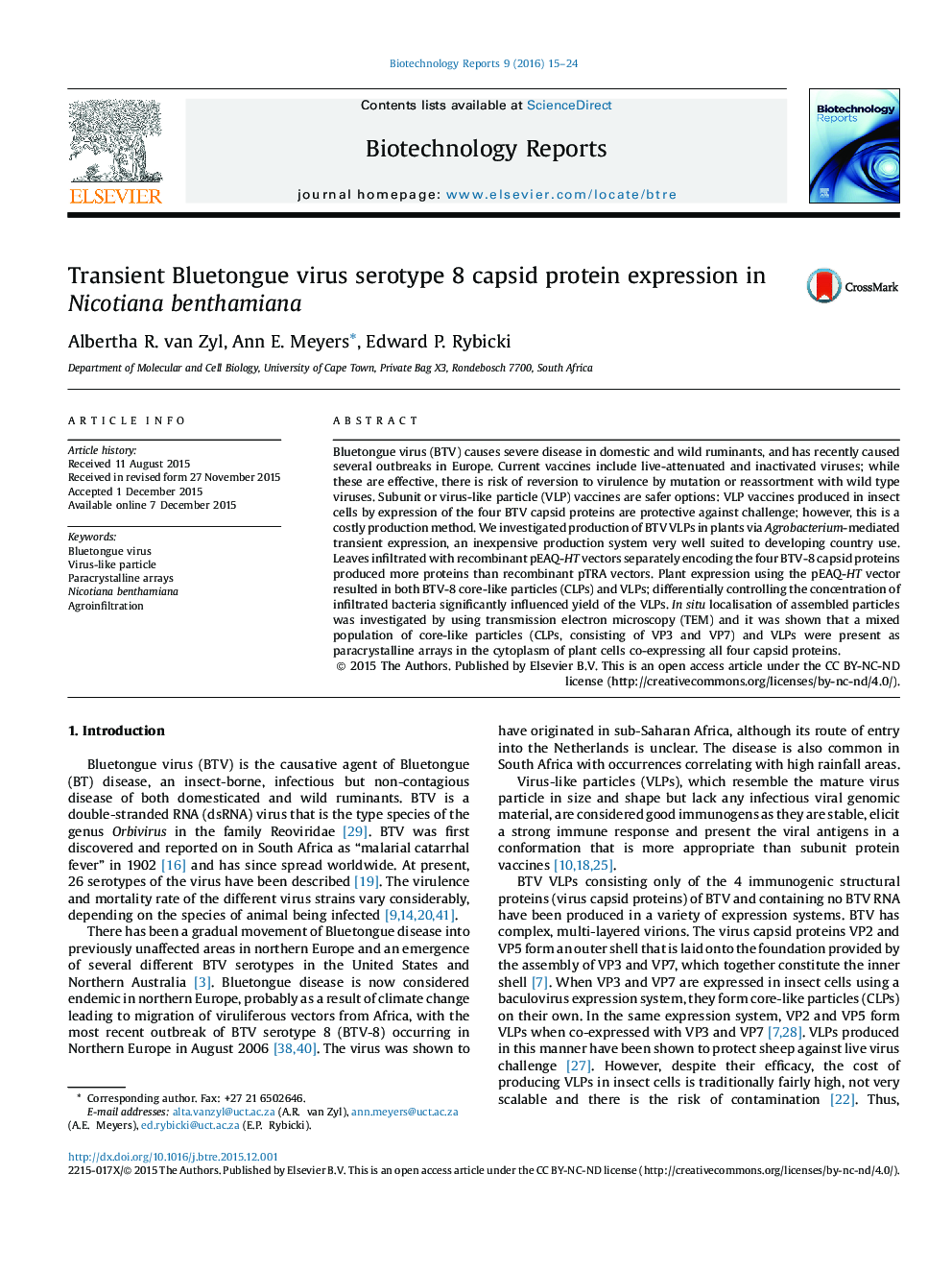| کد مقاله | کد نشریه | سال انتشار | مقاله انگلیسی | نسخه تمام متن |
|---|---|---|---|---|
| 870616 | 1471022 | 2016 | 10 صفحه PDF | دانلود رایگان |

• Expression of BTV-8 capsid genes results in CLPs and VLPs in Nicotiana benthamiana.
• Density of infiltrated Agrobacterium cells influences protein expression levels.
• CLPs/VLPs can be purified from leaf extracts using density gradient centrifugation.
• CLPs/VLPs are present in paracrystalline arrays within the plant cell cytoplasm.
Bluetongue virus (BTV) causes severe disease in domestic and wild ruminants, and has recently caused several outbreaks in Europe. Current vaccines include live-attenuated and inactivated viruses; while these are effective, there is risk of reversion to virulence by mutation or reassortment with wild type viruses. Subunit or virus-like particle (VLP) vaccines are safer options: VLP vaccines produced in insect cells by expression of the four BTV capsid proteins are protective against challenge; however, this is a costly production method. We investigated production of BTV VLPs in plants via Agrobacterium-mediated transient expression, an inexpensive production system very well suited to developing country use. Leaves infiltrated with recombinant pEAQ-HT vectors separately encoding the four BTV-8 capsid proteins produced more proteins than recombinant pTRA vectors. Plant expression using the pEAQ-HT vector resulted in both BTV-8 core-like particles (CLPs) and VLPs; differentially controlling the concentration of infiltrated bacteria significantly influenced yield of the VLPs. In situ localisation of assembled particles was investigated by using transmission electron microscopy (TEM) and it was shown that a mixed population of core-like particles (CLPs, consisting of VP3 and VP7) and VLPs were present as paracrystalline arrays in the cytoplasm of plant cells co-expressing all four capsid proteins.
Figure optionsDownload as PowerPoint slide
Journal: Biotechnology Reports - Volume 9, March 2016, Pages 15–24